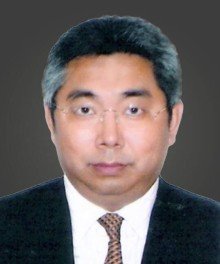心律不正的現況
估計香港約有七至八萬人受心律不正(又稱心律不整或心律不齊)問題影響,而患病風險還會隨着年紀增長而上升,其中又以心房纖維性顫動和心室纖維顫動最
Epidemiology
It is estimated about 70 to 80 thousand people in Hong Kong are affected by arrhythmia (also known as cardiac or heart arrhythmia), with the risk of the disease increasing with age. Atrial fibrillation and ventricular fibrillation are the most common types of arrhythmia. Generally if a patient with arrhythmia is not properly treated, their mortality rate will triple, and the risk of stroke and heart failure will be about 5 and 3 times higher respectively than that of ordinary people.
What is Arrhythmia?
Unusual heartbeats that are too fast (over 100 beats per minute), too slow (less than 50 beats per minute) or palpitations (intermittent fast or distrubed heartbeats) are collectively categorized as irregular heartbeats. The same is true for abnormal heartbeats, which contain “bradycardia” for less than 60 beats per minute, and “tachycardia” for over 100 beats per minute. The follow are the most common arrhythmia conditions:
-
Ventricular Fibrillation (VF): The most serious type of arrhythmia is also the “culprit” behind half of all sudden heart disease deaths. The rapid and chaotic heartbeat hinders the lower heart cavity from pumping blood and oxygen to the brain and may even stop the heart entirely, leading to death within a few minutes.
-
Atrial Fibrillation (AF): The upper heart chamber and atrium of the patient will vibrate rapidly and chaotically, causing the heartbeat to become irregular, sometimes as high as 200 beats per minute. Although not directly fatal, it may cause other heart problems and congestive heart failure. The risk of stroke also increases by 5 times compared to normal.
-
Ventricular Tachycardia (VT): Common symptom is an extremely fast heartbeat, which can turn into fatal ventricular fibrillation. Requires early monitoring and treatment.
-
Sick Sinus Syndrome (SSS): Also known as sinus node dysfunction, it refers to a series of malfunctions in the sinus node such as an abnormally slow heart rate during rest, failure to speed up during exercise, failure to respond to adrenaline regulation, and more.
-
Supraventricular Tachycardia (SVT): Risk is relatively low, and usually comes and goes suddenly ranging from a few minutes to a few hours. Can cause palpitations, dizziness, or shortness of breath
普遍,若心律不正患者沒有得到適當治療,死亡率將增加兩倍,患上中風及心臟衰竭風險亦較常人高約5倍及3倍。
甚麼是心律不正?
心臟不規則地跳動、過快(心跳每分鐘超過100次)、過慢(心跳每分鐘少過50次)或心悸(間歇性心跳過快或紊亂),一概稱為心律不正。不正常的心跳也一樣,可分為「心搏過緩」,即每分鐘少於60次,而「心博過速」則指每分鐘逾100次,下列為最常見的心律不正問題:
- 心室纖維顫動(VF): 最嚴重的心律不正,也是半數心臟病猝死的「元兇」。急速而混亂的心跳妨礙下心腔將血液和氧份泵至腦部及身體,甚至令心臟完全停頓,數分鐘內便會死亡。
- 心房纖維顫動(AF): 患者的上心腔、心房會急速及紊亂地顫動,令心跳變得不規則,有時每分鐘高達200次。雖然不會直接致命,卻會導致其他心臟問題及充血性心臟衰竭,患者的中風機會,比一般人高5倍。
- 心室心搏過速(VT) : 症狀是心跳極快,可以轉化成致命性的心室顫動,須及早監察和治療。
- 病竇症候群(SSS): 又稱竇房結功能異常,指一系列竇房結功能失調,如在休息時心跳率會不正常地緩慢、運動時不能加快、未能因應腎上腺素調節等等。
- 心室心搏過速(SVT): 危險性相對較低,通常驟來驟去,由數分鐘以至數小時不等,可引起心悸、昏暈或氣促。

























